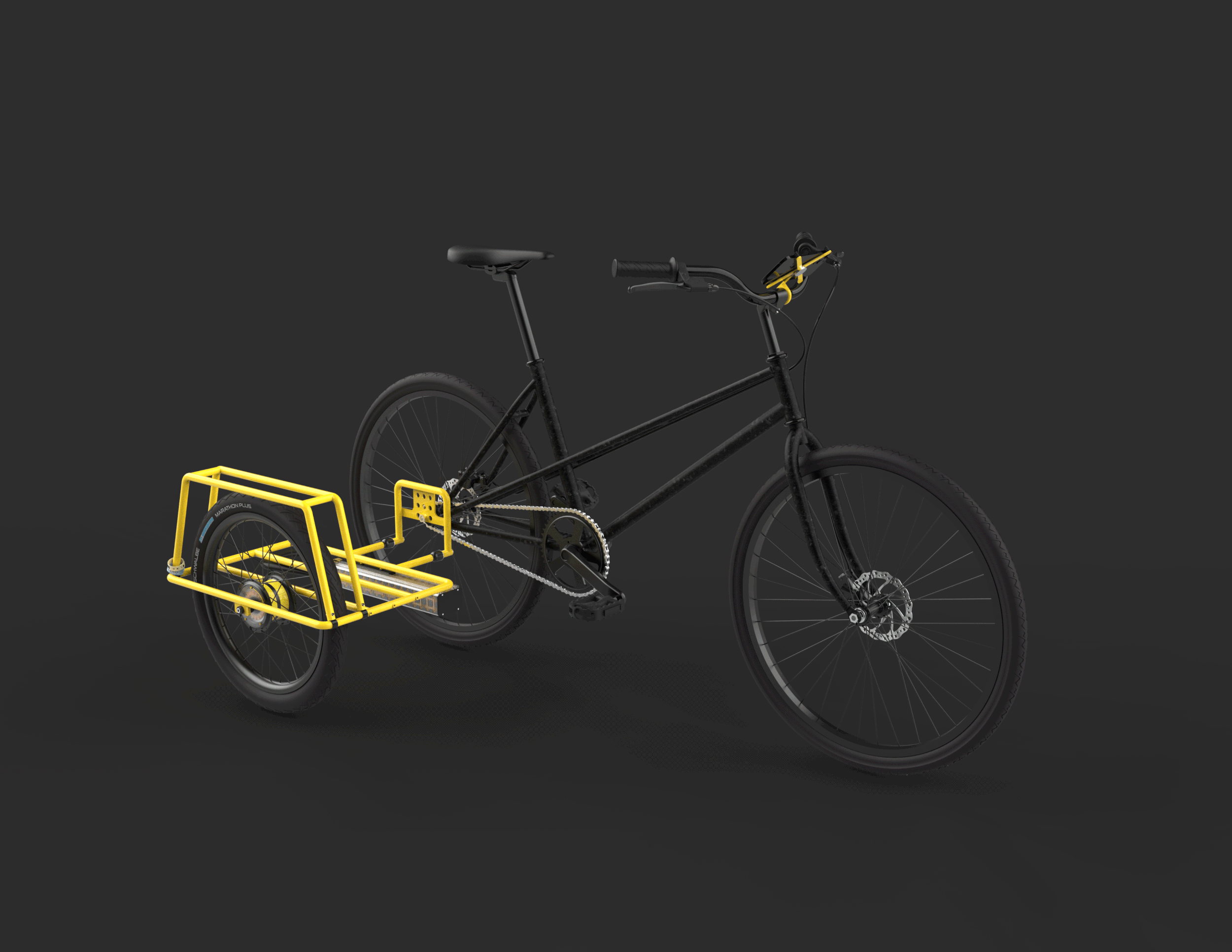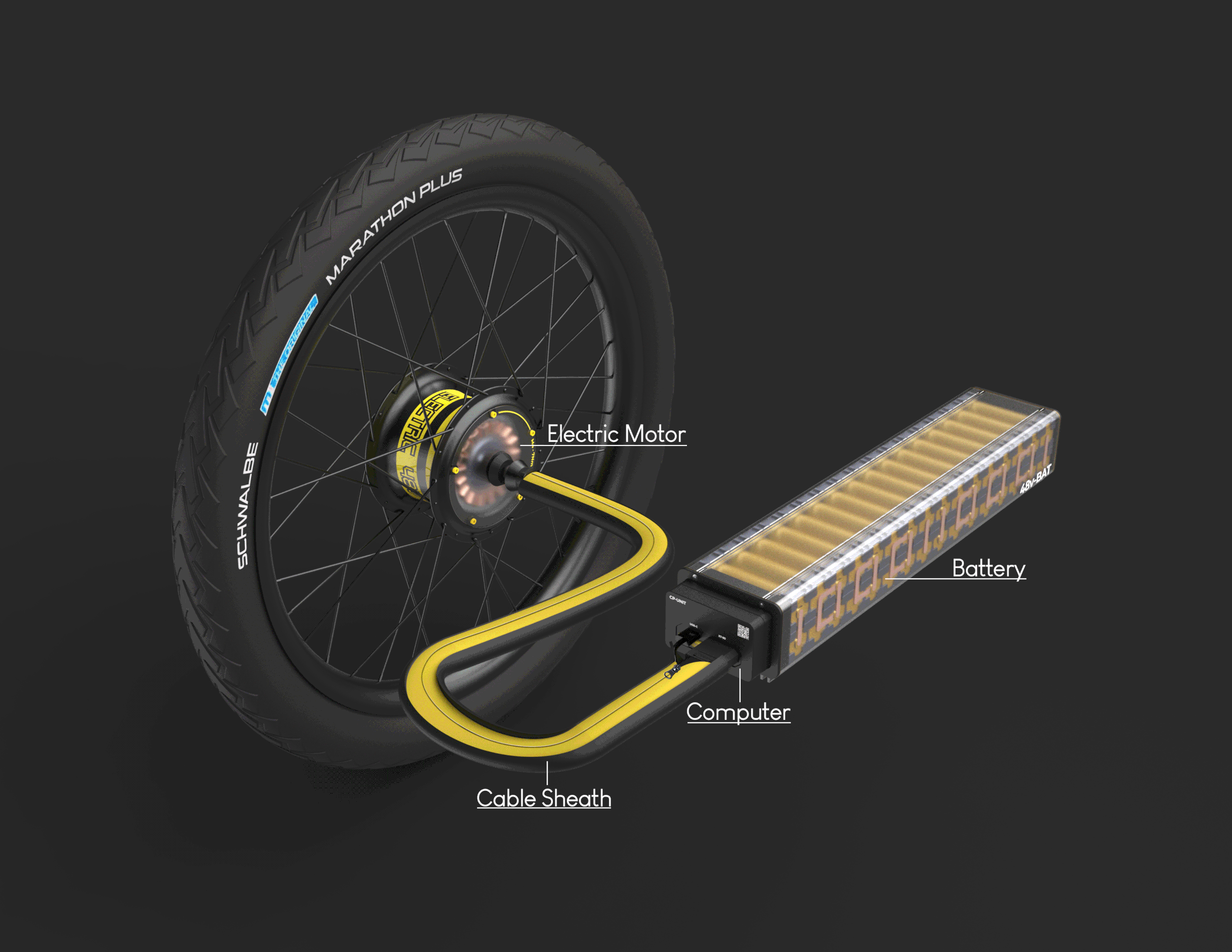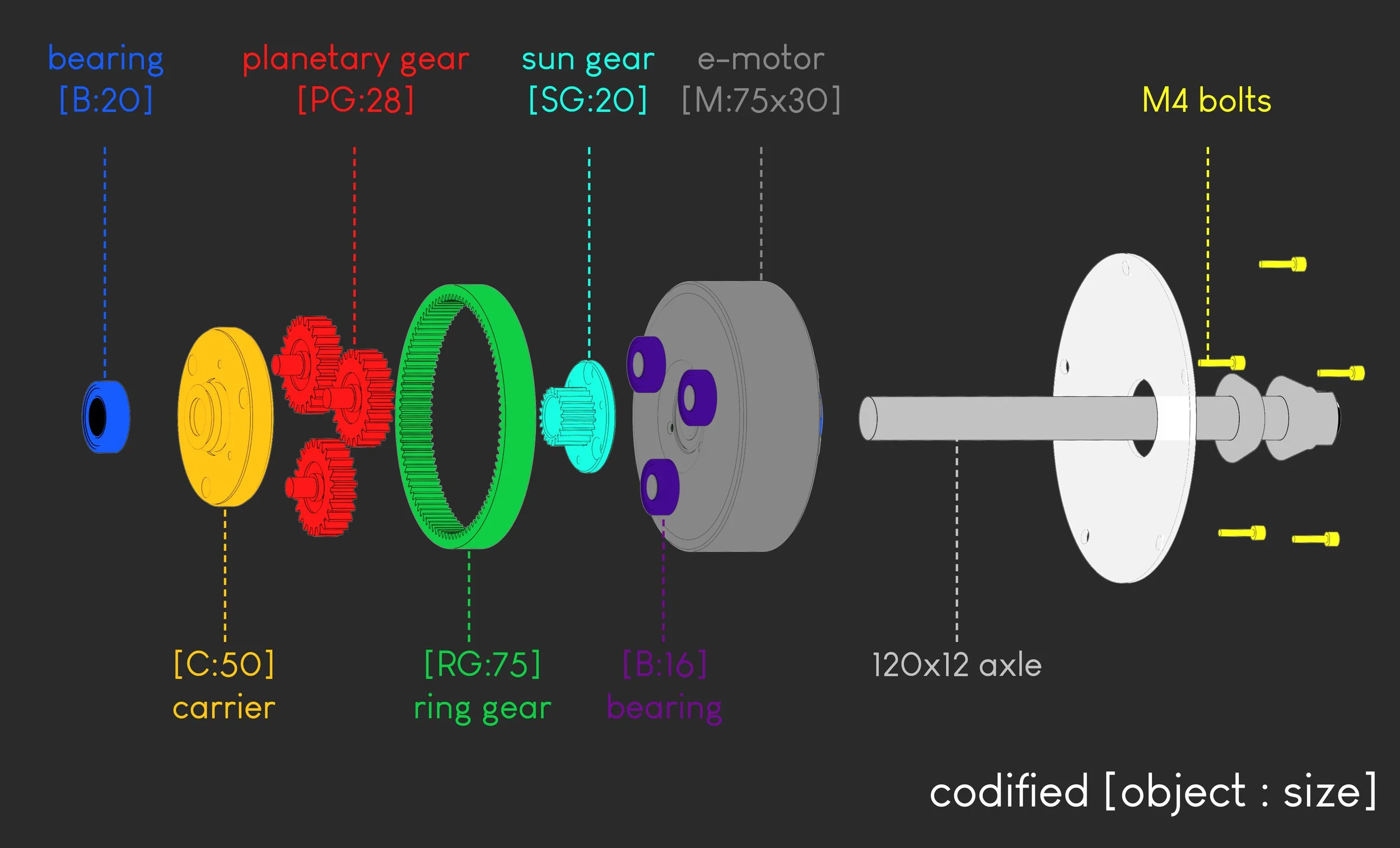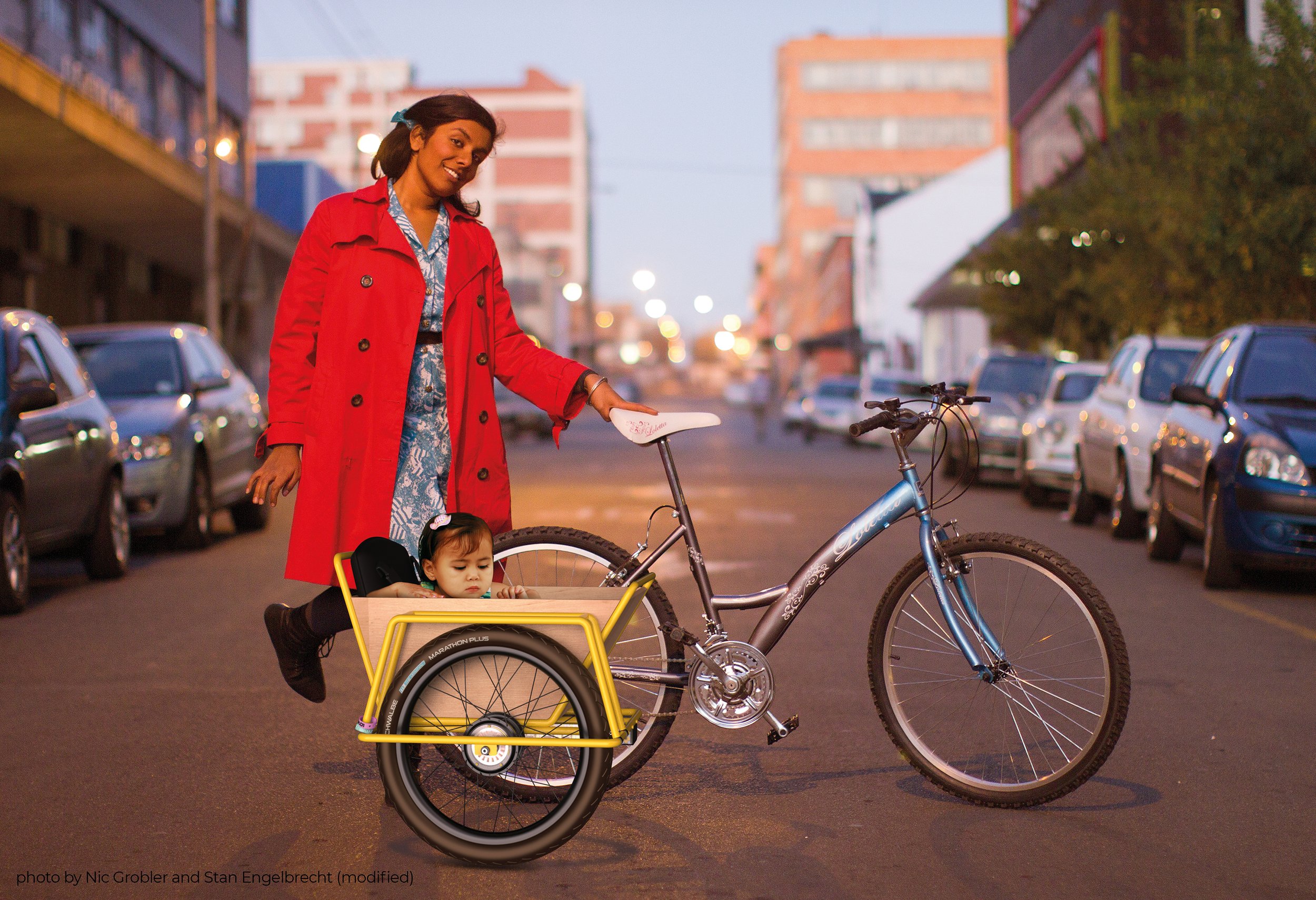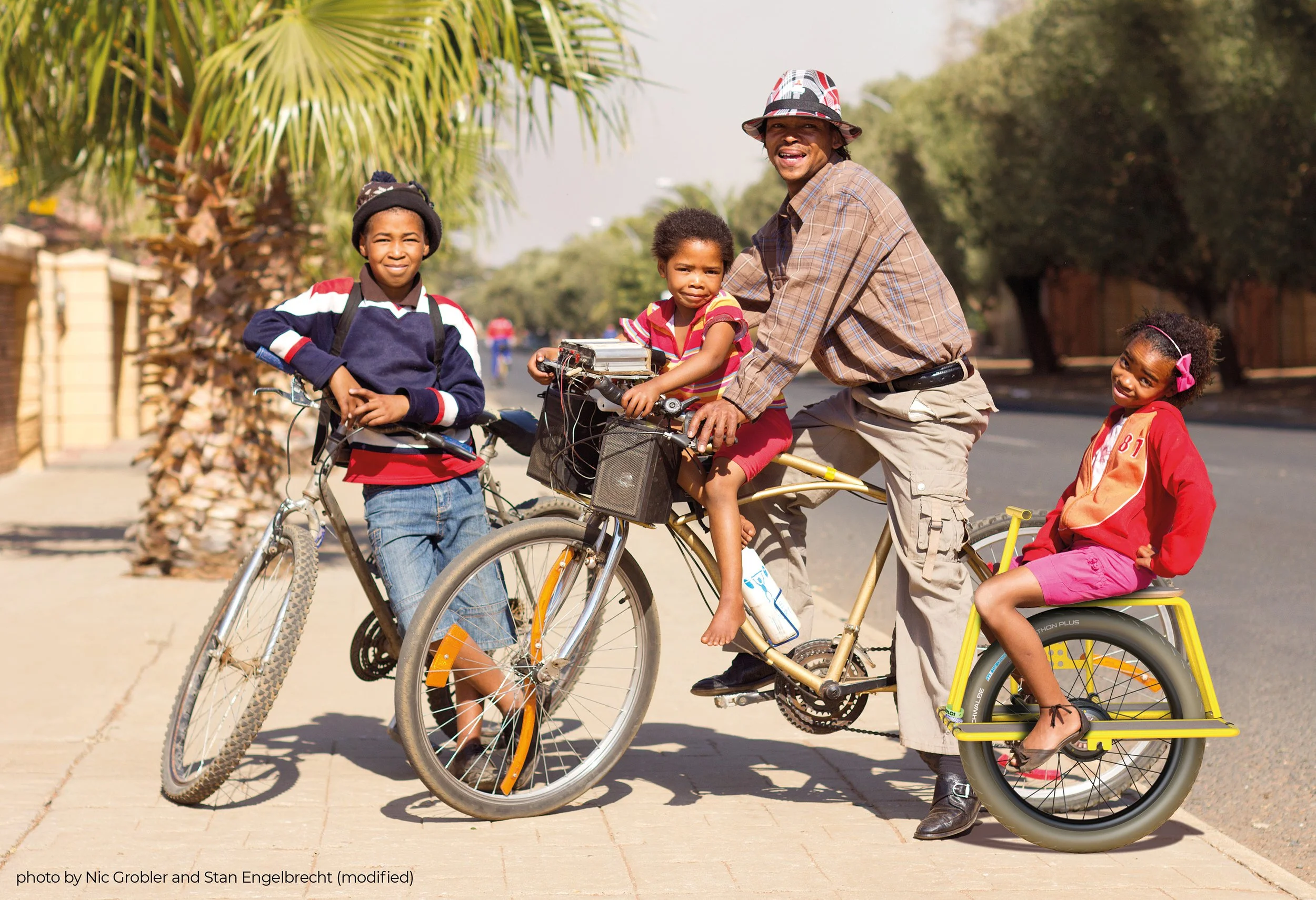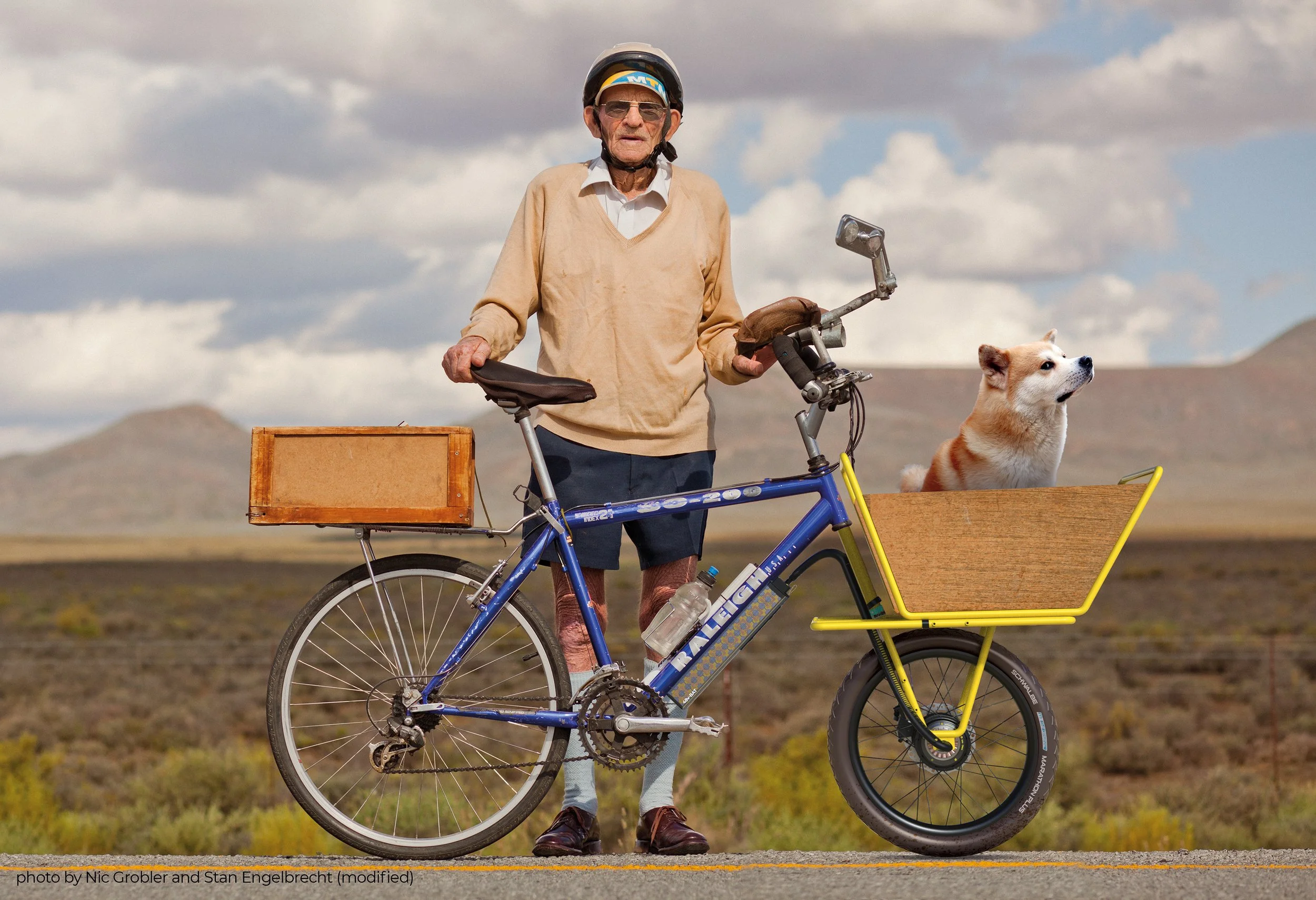Equichron Theory and the New Old Bike Prototype
Summary of a Design Masters Thesis at the University of Illinois at Chicago, May 2022.
Design integrates parts into whole compositions. Past, present, and future should be part of this whole.
Equichron Theory makes one claim: considering time equally to all other project criteria leads to meaningful and lasting design.
Research the past. Learn from mistakes, build on successes.
Consider what we presently have to work with. Working within our means is efficient and can be a source of inspiration.
Anticipate future needs. Objects wear out and need maintenance. Parts break and need repair. Technology advances, lives change.
The bicycle industry is both the source of inspiration and an example of Equichron Theory in practice. With established frameworks dating back to the early 1900s, modular component-based developments build on what has come before. New technologies are often serviceable and upgradable with an ability to mix old and new together.
The bicycle market is experiencing one of its biggest technological leaps forward with efficient electric motors and batteries(1). This electric bicycle boom is further fueled by demand due to the Covid-19 pandemic, supply shortages, and rising oil prices. It is critical that historic bicycle values are not lost in this leap.
Van Moof is one of the best known electric bicycle companies. They sold more e-bikes in the first four months of 2020 than in 2018 and 2019 combined, however 1 in 10 received complaints with no support system in place (2). Most production e-bikes take a proprietary approach to their designs, necessitating training for maintenance. Bike shops apply to become trained and certified as dealers. This limits maintenance accessibility and prioritizes corporations over community.
We need a better system for this technological shift. An electrified bike should be as simple, accessible, and understandable as possible. Due to the nature of its complexity an electrical system will be less transparent but that doesn’t mean it has to be entirely opaque.
Shown in the concept below, major electric system components are separated: motor, computer, and battery. Computer and battery are visually integrated but separate with standard connectors, allowing each to be upgraded independent of the other.
The parts within the system should also be treated as components. Bafang is the largest electric motor supplier offering systems that work with classic bike frames (3). They are best positioned to shape the industry if they can take inspiration from historic component development and apply the same values to their products. A precedent would be the “Standardized Headset Identification System” where collaborators codified headset parts for system clarity (4). A similar codification of common electric motor parts could greatly benefit the bicycle industry.
While there are efficiencies to micromobility regarding space, economy, and environment, there are utilitarian benefits to larger vehicles in carrying capacity and stability. Cargo bikes have addressed this category of needs, however they are expensive and large, hindering adoption. The system also explores component-inspired cargo options utilizing sidecar and cycle truck archetypes.
A cycle truck maintains the footprint of a standard bicycle while increasing the carrying capacity. By introducing a smaller front wheel and integrated rack, heavier loads and larger volumes can be transported at a lower center of gravity.
An electrified cycle truck prototype was explored starting with a 1970s frame, adding a custom fork and Bafang BBS02 electric mid-drive motor: New life given to an Old Bike. The custom cycle truck fork was offered in a successfully funded Kickstarter with backers communicating an interest in decreasing car dependency.
[If you are interested in a custom fork, please send me a message]
This “New Old Bike” system is best envisioned with real people and their bicycles. “Bicycle Portraits” is a project by South African photographers Nic Grobler and Stan Engelbrecht. With their permission, the system has been envisioned on their photographs. Inspired by their work, original photographs of local Chicago cyclists have also been used.
This is the hope for the future of bicycles: that new technology will continue to build on past successes without losing values that have always been part of bicycle culture. By taking a component based approach to both electrification and utility, bicycles can grow and adapt with us as they have for the past century. We can continue to use the unique and individual bikes we own. We can continue to support the wonderful system of local bike shop communities that maintain our bikes. Shifting needs are met as our life demands change; from getting groceries one day, to taking a child to school a few years later. And ultimately the system can be passed on to the next generation.
References
Surico, John. 2021. “The Popularity of E-Bikes Isn’t Slowing Down.” The New York Times, November 8, 2021, sec. Business. https://www.nytimes.com/2021/11/08/business/e-bikes-urban-transit.html.
Ricker, Thomas. 2020. “VanMoof Co-Founders Address S3 Issues and How It’s Fixing Remote Support.” The Verge. September 16, 2020. https://www.theverge.com/2020/9/16/21437704/vanmoof-interview-s3-electric-bike-issues-delays-mobile-service-network.
Bafang. n.d. “Company.” Accessed April 30, 2022. https://bafang-e.com/en/about-bafang/company/.
“Standardized Headset Identification System.” 2015. Park Tool. August 26, 2015. https://www.parktool.com/blog/repair-help/standardized-headset-identification-system.
Canning, Liz. 2019. Motherload. Digital. Documentary. Independent, Liz McGregor. http://motherloadmovie.com/welcome.
Thank You
This project would not be possible without a strong support network. Thank you to the following communities: the University of Illinois at Chicago, Bubbly Dynamics, Noroc, Chicago Critical Mass, and of course my friends and family.

